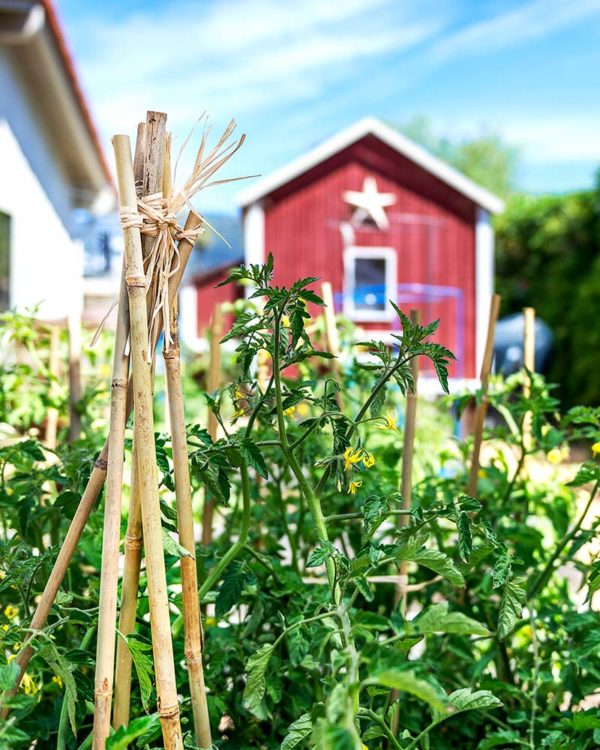5 Essential Steps to Cut Bamboo Plant Stakes: A Beginner's Guide
Bamboo plant stakes have become increasingly popular among gardeners and DIY enthusiasts due to their sustainability, durability, and versatility. Whether you're staking tomatoes in your backyard garden or crafting a natural trellis, bamboo stakes are a go-to resource. This guide is designed to take you through the essential steps of cutting your own bamboo plant stakes, tailored for beginners who are navigating this eco-friendly journey for the first time.

Step 1: Choosing the Right Bamboo
The foundation of creating effective bamboo stakes begins with selecting the right type of bamboo. Not all bamboo is created equal, and the variety you choose can impact the strength, flexibility, and longevity of your stakes.
- Importance of Species Selection
There are over a thousand species of bamboo, each with unique characteristics. For plant stakes, opt for species known for their strength and durability, such as Phyllostachys or Bambusa.
- Identifying Mature Bamboo Stalks
Mature bamboo, typically three to five years old, makes for the best stakes. These stalks have developed the necessary hardness and are less prone to splitting. Look for stalks with a solid color and firm texture, indications of maturity.
Step 2: Gathering Your Tools
Having the right tools not only makes the cutting process easier but also safer. Here’s what you’ll need:
- Essential Tools for Cutting Bamboo
A sharp, fine-toothed saw is crucial for a clean cut. For thicker stalks, consider a power saw, while hand saws might suffice for thinner ones.
- Safety Equipment
Never overlook safety. Gloves protect your hands, while goggles shield your eyes from flying splinters. Also, wearing long sleeves and pants can safeguard against scratches.
Step 3: Preparing to Cut
Preparation is key to ensuring smooth and efficient cuts.
- Marking the Cutting Points
Measure and mark the desired length of your stakes. Using a chalk or a marker, draw a line around the circumference for a precise guide.
- The Best Time of Day to Cut Bamboo
Cutting in the early morning or late evening, when the plant is most hydrated, can reduce the chances of splintering.
Step 4: The Cutting Process
Now that you're all set, it's time to cut.
- Techniques for a Clean Cut
Use a steady, controlled motion to saw through the bamboo. Cutting at a slight angle can help water run off the stake, reducing rot.
- Handling and Storing Freshly Cut Bamboo
Immediately after cutting, store the stakes in a dry, shaded area to prevent cracking. Avoid direct sunlight and moisture.
Step 5: Curing and Preserving Bamboo Stakes
To ensure your bamboo stakes last, curing and preserving them is essential.
- Curing Methods
Air drying is the simplest method, taking a few weeks to several months depending on climate conditions. For quicker curing, consider using a kiln.
- Preserving Your Bamboo Stakes
To protect against insects and rot, apply a natural preservative, such as borax solution, after curing.
Conclusion: Start Your Bamboo Garden
With these steps, you're well on your way to creating sustainable, durable bamboo stakes for your garden. This eco-friendly choice not only supports your plants but also contributes to a healthier planet.
FAQs
-
Can I use any type of bamboo for plant stakes? Not all bamboo species are suitable for stakes due to variations in strength and flexibility. Researching and choosing the right type is crucial.
-
How long do bamboo stakes last? Properly cured and preserved bamboo stakes can last several years, depending on environmental conditions and treatment.
-
Is it necessary to cure bamboo stakes? Curing enhances durability and prevents premature decay, making it an essential step for long-lasting stakes.
-
Can I preserve bamboo stakes without chemicals? Yes, there are natural preservative methods, such as using borax solution, which are effective and environmentally friendly.
-
What's the best way to cut bamboo to avoid splintering? Using a sharp, fine-toothed saw and cutting in a steady, controlled motion can minimize splintering. Cutting at a slight angle helps too.

